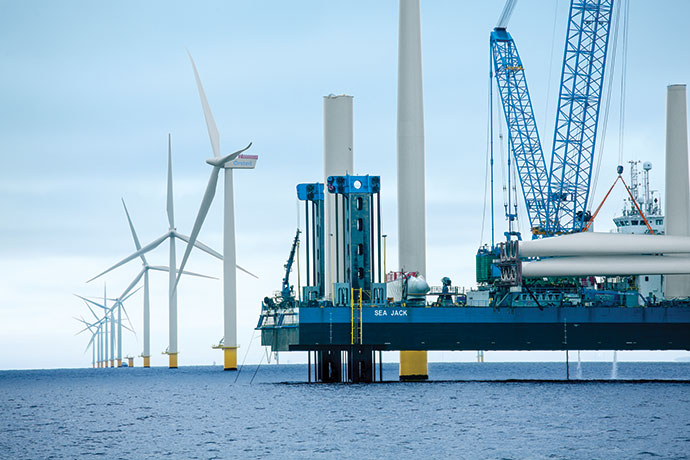The offshore wind industry is about to take off in the U.S., and New Jersey is poised to become the epicenter. After several false starts over the years, it seems offshore wind is finally garnering the support needed to expand in the U.S.
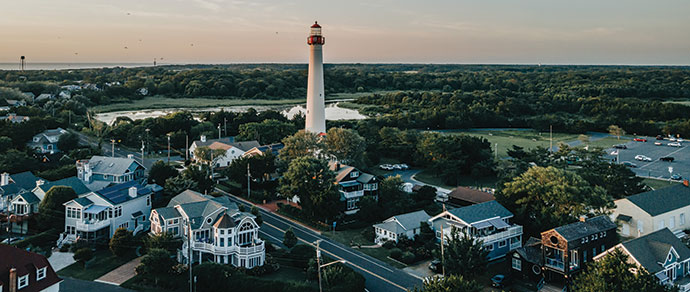
The Biden administration has set an ambitious goal to jump-start the offshore wind sector with 30 gigawatts (GW) of U.S. projects by 2030. In his first week in office, President Joe Biden issued an executive order calling for new infrastructure investments in clean energy. In particular, the order committed to expanding opportunities for the offshore wind industry up and down the Atlantic coast, in the Gulf of Mexico, and in Pacific waters. In March, the Biden Administration announced a series of steps to catalyze offshore wind energy while strengthening the domestic supply chain and creating jobs.
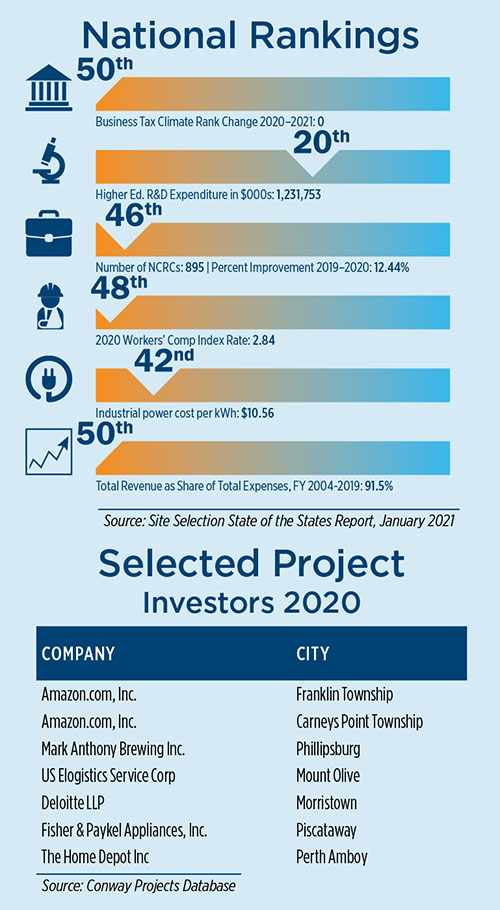
“President Biden has declared very clearly that when he thinks of climate, he thinks of people and jobs — good-paying, union jobs,” said National Climate Advisor Gina McCarthy. “That’s because President Biden believes we have an enormous opportunity in front of us to not only address the threats of climate change, but use it as a chance to create millions of good-paying, union jobs that will fuel America’s economic recovery, rebuild the middle class, and make sure we bounce back from the crises we face. Nowhere is the scale of that opportunity clearer than for offshore wind. This commitment to a new, untapped industry will create pathways to the middle class for people from all backgrounds and communities.”
Biden’s offshore wind goals align perfectly with those put in place by New Jersey Governor Phil Murphy in 2019. New Jersey’s ambitious clean energy goals will necessitate 7,500 megawatts of offshore wind energy by 2035. Indeed, the state has one of the most ambitious Renewable Portfolio Standards in the nation, requiring 35% of the energy sold in the state to come from qualifying energy sources by 2025 and 50% by 2030.
Eventually, there could be as many as 2,000 turbines in the Atlantic, but today there are only seven — five off Rhode Island and two off Virginia. The Bureau of Ocean Energy Management (BOEM) anticipates initiating the environmental reviews for up to 10 additional projects later this year.
Three Projects with Massive Potential
One of the key parts of Biden’s plan involves fast-tracking critical permitting milestones for New Jersey’s Ocean Wind Offshore Wind Project. Currently in the development stage, Ocean Wind is being developed by Ørsted and PSE&G with a total capacity of 1,100 megawatts (MW) — enough to power 500,000 homes across New Jersey. The project will include 92 turbines off Cape May in southern New Jersey. Ocean Winds should have final federal approval by June 2023. BOEM will soon prepare an environmental impact statement for the Ocean Wind project, which will put it in line to become the country’s third commercial-scale offshore wind farm.
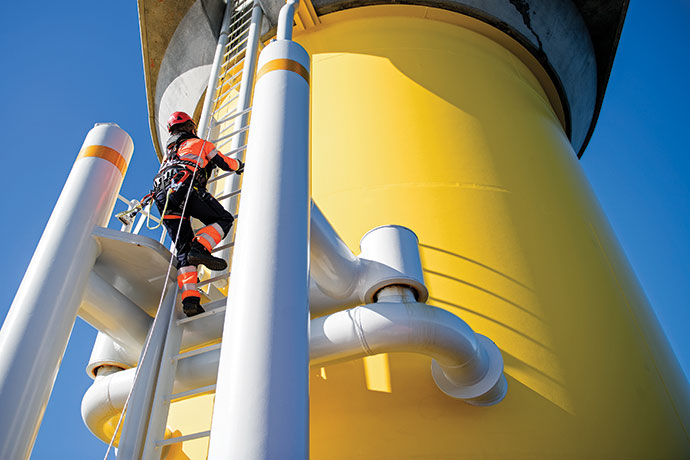
Another proposed development off the New Jersey coast, Atlantic Shores, is a joint venture between Shell New Energies U.S. and EDF Renewables U.S. Over the summer, surveying ships began exploring potential export cable routes leading toward Atlantic City from a 183,000-square-mile lease area in the ocean. The Atlantic Shores ocean plot stretches eight to 20 miles off the coast between Atlantic City and Barnegat Light on Long Beach Island. The wind farm could generate 2,500 MW of clean energy.
“This bold agenda to develop offshore wind in the United States will create tens of thousands of jobs and build a more robust green energy economy in this country,” said Joris Veldhoven, treasurer and commercial director at Atlantic Shores Offshore Wind. “The investments in strengthening port infrastructure and the domestic supply chain will open communities across the coastal U.S. up to tremendous economic opportunity on the international stage. As a developer, we appreciate the advancement of critical permitting milestones for projects in New Jersey and beyond. Together, these priorities will accelerate offshore wind growth and its many economic benefits for coastal communities.
“New Jersey is particularly well-poised to seize this opportunity and meet the growing demand for labor thanks to the strength of its unions,” Veldhoven said. “It’s why we are proud to be partnering with six local unions to train and hire the workforce that will build New Jersey’s green infrastructure as part of our bid submission. We look forward to working with elected officials at every level of government, in New Jersey and in Washington, to help realize this vision.”
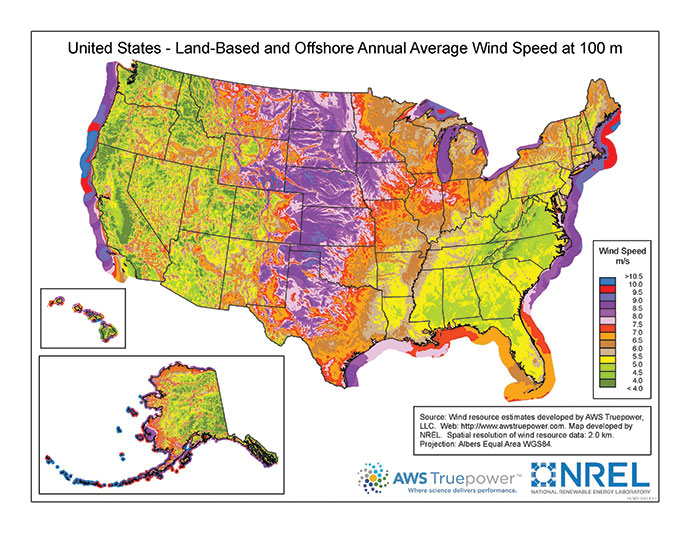
A third wind energy project is also eyeing federal waters approximately 12 nautical miles south of Long Island, New York, and 17 nautical miles east of Long Branch, New Jersey. In June, BOEM began conducting an environmental review for Empire Wind, LLC. If approved, Empire Wind would be allowed to construct and operate two wind energy facilities offshore New York and New Jersey, which would generate over 2,000 MW of electricity. During development and construction, Empire Wind would create an average of 880 jobs from its inception in 2019 to 2027, with a peak of almost 2,400 jobs in approximately 2025. During operations and maintenance, Empire Wind would support about 300 long-term jobs.
In addition to calling for up to 174 wind turbine generators, the Empire Wind construction plan calls for two offshore substations, two offshore electric cable routes, up to three export cable landfall sites, up to three onshore electric cable routes, and two onshore substations, providing connection to the existing electrical grid in New York. If built, the two facilities would contribute to New York’s goal of securing 9 GW of offshore wind energy generation by 2035.
“We are building this facility to build the largest monopiles in the world … We’re starting out with some fairly large dimensions so we can anticipate future growth.”
Advancing these projects and creating better certainty for the offshore wind industry is critical to bringing robust supply chain investments to the United States.
“As coastal states look to offshore wind to help fulfill their clean energy goals to combat climate change and create good-paying jobs, BOEM is working diligently to evaluate environmental and multiple-use considerations while engaging with our government partners, industry, other ocean users and key stakeholders,” said BOEM Director Amanda Lefton.
Coming Soon: New York Bight
In addition to advancing the Ocean Wind permitting process, the Biden Administration and the Department of the Interior recently proposed leasing an area along the outer continental shelf between Long Island and the New Jersey coast. The New York Bight is an 807,383-acre area of shallow water with the potential to unlock over 7 GW of offshore wind energy to power more than 2.6 million homes and support the creation of thousands of new jobs.
According to an economic impact study by global energy research and consultancy group Wood Mackenzie, the New York Bight region could support up to 11.5 GW of offshore wind development, serving demand from New York and New Jersey, both of which have set ambitious targets and voiced support for the industry.
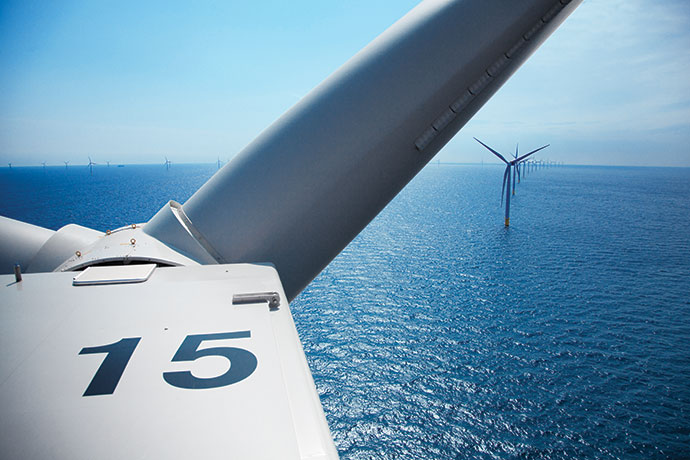
The study notes that if the 2 million acres of federal waters in the New York Bight, as well as waters in California, North Carolina and South Carolina, are leased between now and 2022, offshore wind activities could support approximately 80,000 jobs each year between 2025 and 2035. The report indicated significant short- and long-term investments would be made to support the burgeoning industry, with total investment expected to be $17 billion by 2025, $108 billion by 2030 and $166 billion by 2035. Additionally, between 2022 and 2035, an anticipated $42 billion in capital investments will go to manufacturing turbines and the supply chain, $107 billion going to the construction industry, and $8 billion directed to the transportation industry and ports.
Leasing the eight areas in the New York Bight is just one in a series of moves to advance offshore wind development. Other major milestones include the approval of the first large-scale project in federal waters, the 800-MW Vineyard Wind project off the coast of Martha’s Vineyard; the initiation and review of Revolution Wind offshore Rhode Island; and Ocean Wind offshore New Jersey. BOEM has held eight competitive lease sales and issued 17 active commercial offshore wind leases on the Atlantic from Massachusetts to North Carolina.
Manufacturing the Offshore Supply Chain
The largest industrial offshore wind manufacturing facility in the U.S. is officially off the ground. Construction began in January on the new $250-million state-of-the-art manufacturing facility in Gloucester County at the Paulsboro Marine Terminal.
EEW will build steel components, known as monopiles, for offshore wind turbines that will serve the entire United States offshore wind industry, with production expected to begin in 2023.
“This announcement represents a significant milestone for the Ocean Wind project and New Jersey’s offshore wind goals,” said David Hardy, CEO of Ørsted Offshore North America. “New Jersey is poised to be a leader in the American offshore wind industry with key investments in its port infrastructure, like the Port of Paulsboro and the New Jersey Wind Port. As the state looks to rebuild its economy post COVID-19, Ørsted will be there to partner with the state to create jobs and opportunities for local suppliers to enter into this new American industry.”
For many years in Europe, EEW has partnered with Ørsted to supply the company with over 1,000 monopiles. The company aims to replicate its Rostock, Germany, facility at the Paulsboro site. The German site produces about 100 monopiles a year and employs approximately 500 factory workers.
“Our mission here is to bring over a clone of our German factory to New Jersey,” explained Lee Laurendeau, CEO of EEW American Offshore Structures, a subsidiary of Germany-based EEW, in a March offshore wind supply chain webinar hosted by the Southern New Jersey Development Council. “Along with that, we’ll be creating hundreds of manufacturing and construction jobs. Our goal is not just New Jersey, but to supply the entire offshore wind market whether that’s in Virginia or Massachusetts.”
The facility will have approximately 500,000 sq. ft. of manufacturing space spread across six buildings built for heavy manufacturing with overhead cranes to maneuver the massive monopiles. Each monopile is 40 ft. in diameter and up to 400 ft. long and weighs about 2,500 tons or 5 million pounds each.
“We are building this facility to build the largest monopiles in the world,” Laurendeau said. “Our experience in Germany is that as soon as you’ve built your factory, it’s obsolete about two years later. We’re starting out with some fairly large dimensions so we can anticipate future growth.”
Jobs created by this investment will resemble those of shipbuilding yards, with the need for welding, painting, grinding, roll bending and plate cutting. Each monopile requires over 1,000 gallons of epoxy paint, to provide a bit of perspective on the size.
“Offshore wind is a once-in-a-generation opportunity that allows us to protect our environment while significantly expanding and securing the state’s economy for the immediate and long term.”
“When we’re up and running, it is going to be a duplicate of our factory in Germany. They’re currently at 500 [employees],” said Laurendeau. “There’s no reason why we shouldn’t be close to those numbers [in Paulsboro.] For every job we have inside of our fence, there’s a multiplier outside of the fence. With the local supply chain, we’re very focused on New Jersey in terms of manufacturing goods and services, so we’re absolutely looking to build our supply chain.”
Laurendeau notes that the company is competing on the world stage against other manufacturers in Europe. “From my perspective, my competition is monopiles made in Europe. We have an advantage in that it costs about a million dollars each to ship them over the ocean.”
Supporting Infrastructure Needs
Prior to this announcement, in June 2020, Governor Murphy publicized plans to develop the New Jersey Wind Port in Lower Alloways Creek, a first-in-the-nation infrastructure investment that will provide a location for essential staging, assembly, and manufacturing activities related to offshore wind projects on the East Coast.
The development of the New Jersey Wind Port, together with the construction of the new manufacturing facility at the Paulsboro Marine Terminal, is seen as a monumental step forward in solidifying New Jersey as the country’s leader in offshore wind and clean energy procurement.
“Developing New Jersey’s offshore wind capabilities has been a key priority of my administration since taking office in 2018,” said Gov. Murphy. “Offshore wind is a once-in-a-generation opportunity that allows us to protect our environment while significantly expanding and securing the state’s economy for the immediate and long term. This is the largest industrial offshore wind investment in the United States to date and will create hundreds of high-paying jobs at a time when New Jersey’s economy has been ravaged by the COVID-19 pandemic. Coupled with the creation of the New Jersey Wind Port that I announced earlier this year, this investment will continue to cement New Jersey as the leader in offshore wind in the United States.”
Ørsted Confirms Confidence in New Jersey
In May, Ørsted selected Newark, New Jersey, as its North American Digital Operations Headquarters site. The new office will initially be home to 20 employees, including 12-14 new IT positions this year, with the potential to more than double its head count as the company grows offshore and onshore in the U.S.
Ørsted selected Newark due to its proximity to IT talent pools in the region and its strategic location to key existing Ørsted offices and businesses. The Digital Operations Headquarters will require highly trained, technical staff who will support Ørsted’s operations throughout North America for both onshore and offshore assets. The company cited New Jersey’s impressive higher education institutions, including the New Jersey Institute of Technology (NJIT), as essential partners in recruiting personnel.
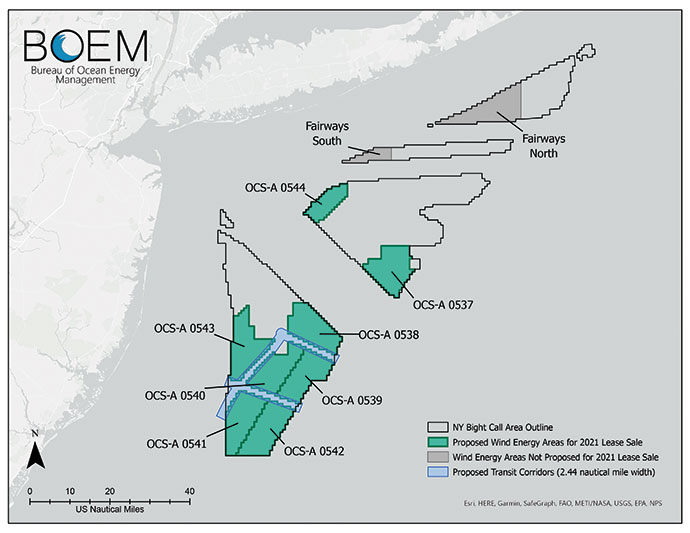
Signed in June, a 10-year, $1.5 million partnership between Ørsted and NJIT will create new scholarship and career development opportunities for the school’s engineering and computer science undergraduate students. The agreement also addresses STEM education gaps for underrepresented students in Newark by expanding a range of STEM outreach events, initiatives and college-prep programming for local elementary, middle school and high school students at NJIT.
“Our investments into New Jersey are expanding beyond our offshore wind projects,” said Hardy. “While most of our employees will be based in southern New Jersey when our projects are operational, this headquarters ensures that the economic benefits of offshore wind will be spread across the entire state. Newark is fast becoming a tech hub, and we’re proud to play a part in its resurgence.”
New Jersey Preps for Workforce Demands
The time to start meeting the workforce needs for the nascent industry is now. New Jersey has workforce plans designed to power the industry’s growth.
The New Jersey Wind Turbine Tech Training Challenge is a new grant competition seeking to establish an industry-recognized training program and facility to prepare workers for the new sector. The training program must result in an industry-recognized, credit-bearing certificate program that is part of an associate’s degree or higher pathway. The challenge will address the gap in New Jersey’s offshore wind ecosystem by providing an up to $1 million grant to a New Jersey community college to collaborate with labor organizations and industry stakeholders to design and implement a curriculum that meets industry standards. The winning program will be the first of its kind in the state and will put New Jersey in a leadership position among other states working with the industry.
“As New Jersey transitions to 100% clean energy through initiatives like offshore wind, it is imperative that we cultivate a workforce prepared to meet the emerging opportunities building and operating clean energy infrastructure offers.”
“As New Jersey transitions to 100% clean energy through initiatives like offshore wind, it is imperative that we cultivate a workforce prepared to meet the emerging opportunities building and operating clean energy infrastructure offers,” said Joseph Fiordaliso, president of the New Jersey Board of Public Utilities. “This grant opportunity demonstrates the state’s commitment to ensuring that the workforce of tomorrow has a place in our innovation economy and is grown right here in one of New Jersey’s community colleges.”
Another challenge, the Offshore Wind Safety Training Challenge, is a $3 million grant program intending to establish an industry-recognized Global Wind Organization safety training program and facility in the state. The Offshore Wind Safety Training Challenge will provide New Jersey-based academic institutions and training providers and labor unions an opportunity to submit proposals for establishing a Global Wind Organization–accredited Basic Safety and Sea Survival Training program and facility in the state.
“Providing equitable access to innovative opportunities is vital to building a stronger, fairer New Jersey economy that works for all residents. Collaboration between employers and higher education sector is essential to further strengthening the workforce and economy that the state needs to sustain a robust pipeline of highly-skilled workers and assure that the postsecondary-to-employment ecosystem is well-positioned for the future,” said Acting Secretary of Higher Education Dr. Brian Bridges. “We are excited to work with the NJEDA to establish the Offshore Wind Safety Training Challenge to build on opportunities for residents to gain access to the critical training, education and skills required to compete for in-demand jobs.”
New Incentives to Lure Companies to New Jersey’s Shores
In June, the New Jersey Economic Development Authority (NJEDA) approved a series of amendments to the Offshore Wind Economic Development Tax Credit Program. The changes were made to reflect the New Jersey Economic Recovery Act signed by Gov. Murphy in January.
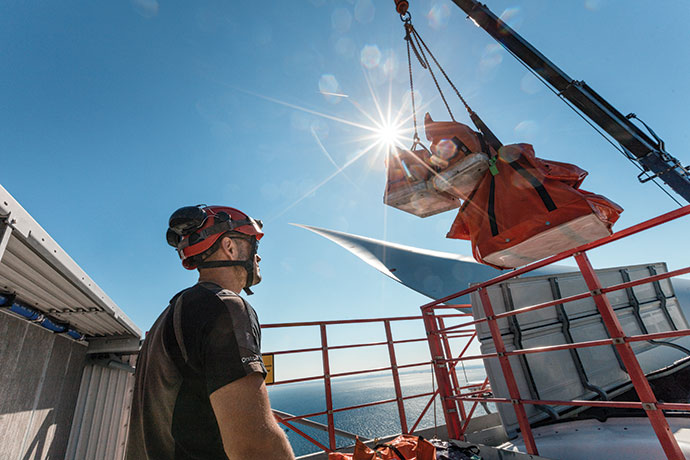
The Offshore Wind Economic Development Tax Credit Program provides tax credits for capital investment in a qualified wind energy facility in New Jersey. It is designed to spur employment growth and offshore wind supply chain development as a result of capital investment in land-based offshore wind industry projects. The changes include modifying the period over which tax credits are paid out from 10 years to five years; revising the minimum number of new full-time jobs required to be eligible for the program from 300 to 150, and allowing for a project to ramp up jobs over time; and expanding the program to the entire state.
The shorter pay-out timeframe is better suited to rapidly scale brand-new operations to support wind farm projects across the U.S. East Coast. The changes also create a pathway for additional projects to participate in the program. Previously a project needed at least 300 new full-time jobs to be eligible for tax credits. Now projects creating between 150-300 new full-time jobs can apply for tax credits. However, awards will be sized using a pro-rated award formula. In recognition of offshore wind being a new industry in the state, the rules also now allow a project to ramp up job creation over the first four years.
“As a result of Governor Murphy’s vision for New Jersey as a national hub for offshore wind, the state is well-positioned to lead this rapidly-growing sector. The changes to the Offshore Wind Tax Credit approved by our Board today will enable greater flexibility for businesses creating new jobs in New Jersey,” said NJEDA CEO Tim Sullivan. “Companies up and down the offshore wind supply chain will find that New Jersey offers a vast pool of skilled talent, a firm commitment to investment in first-rate offshore wind infrastructure, and an innovation ecosystem that offers resources to prepare companies for this vast opportunity.”
